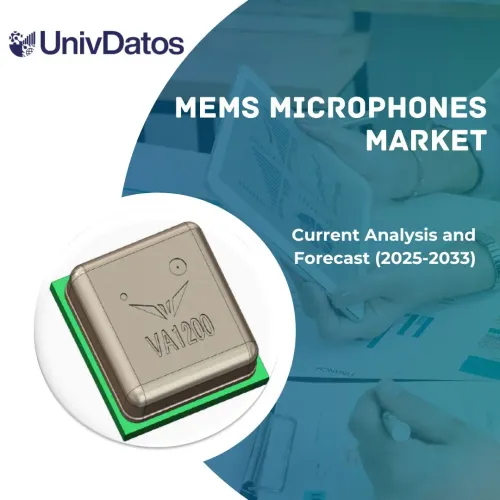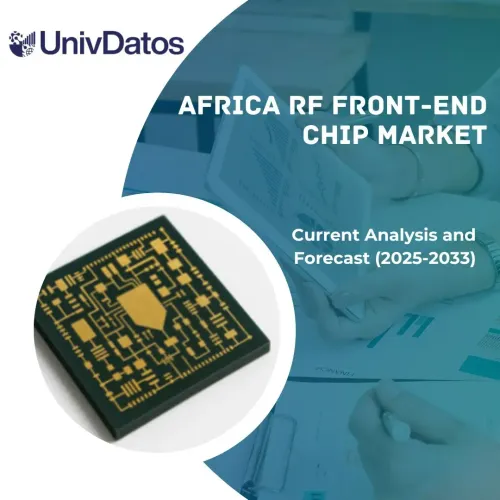- Inicio
- Acerca de nosotros
- Industria
- Servicios
- Leyendo
- Contáctenos
Mercado de Pick To Light: Análisis actual y pronóstico (2024-2032)
Énfasis en el método (autoguiado y manual); Industria (Ensamblaje y Fabricación, Retail y E-commerce, Alimentos y Bebidas, Pharma y Cosméticos, y Otros); Operación (Colocación y Recogida); Región/País
Tamaño y previsión de Pick to Light
El mercado de Pick to Light se valoró en 528,1 millones de dólares en 2023 y se espera que crezca a una sólida CAGR de alrededor del 8,4% durante el período de previsión (2024-2032) debido a la creciente adopción de Pick to Lights en las industrias minorista y de comercio electrónico.
Análisis de Pick to Light
El mercado de Pick To Light es un sector en rápida evolución impulsado por la necesidad de una ejecución de pedidos eficiente y precisa en almacenes y centros de distribución. Este mercado gira en torno a sistemas que utilizan tecnología de picking dirigida por luz para guiar a los trabajadores a la ubicación exacta de los artículos que se van a recoger, lo que reduce los errores y aumenta la productividad. La creciente demanda de tiempos de entrega más rápidos, junto con el crecimiento del comercio electrónico y la venta minorista omnicanal, ha impulsado la adopción de sistemas Pick To Light en diversas industrias.
Uno de los principales impulsores del mercado de Pick To Light es la necesidad de una mayor eficiencia en las operaciones de almacén. Con el auge del comercio electrónico y la creciente complejidad de las cadenas de suministro, las empresas están bajo presión para cumplir con los pedidos de forma rápida y precisa. Los sistemas Pick To Light ofrecen una solución al proporcionar un proceso de picking altamente eficiente que minimiza los errores y reduce el tiempo necesario para cumplir con los pedidos. Esta mayor eficiencia no solo mejora la satisfacción del cliente, sino que también ayuda a las empresas a reducir los costos operativos y seguir siendo competitivas en el mercado.
Otro factor que impulsa el crecimiento del mercado de Pick To Light es el avance de la tecnología. Con la integración de IoT, IA y robótica, los sistemas Pick To Light son cada vez más avanzados y sofisticados. Estas tecnologías permiten el seguimiento en tiempo real del inventario, el análisis predictivo para una mejor toma de decisiones y la automatización de tareas repetitivas, lo que mejora aún más la eficiencia y la precisión de los procesos de cumplimiento de pedidos. A medida que la tecnología continúa avanzando, se espera que los sistemas Pick To Light se vuelvan aún más integrales para las operaciones de almacén, lo que impulsará un mayor crecimiento en el mercado. En general, el mercado de Pick To Light está preparado para un crecimiento significativo en los próximos años, impulsado por la creciente demanda de eficiencia y precisión en los procesos de cumplimiento de pedidos. Las empresas que invierten en sistemas Pick To Light avanzados se beneficiarán de una mejor eficiencia operativa, costos reducidos y una mayor satisfacción del cliente, posicionándose para el éxito en el panorama competitivo actual del mercado.
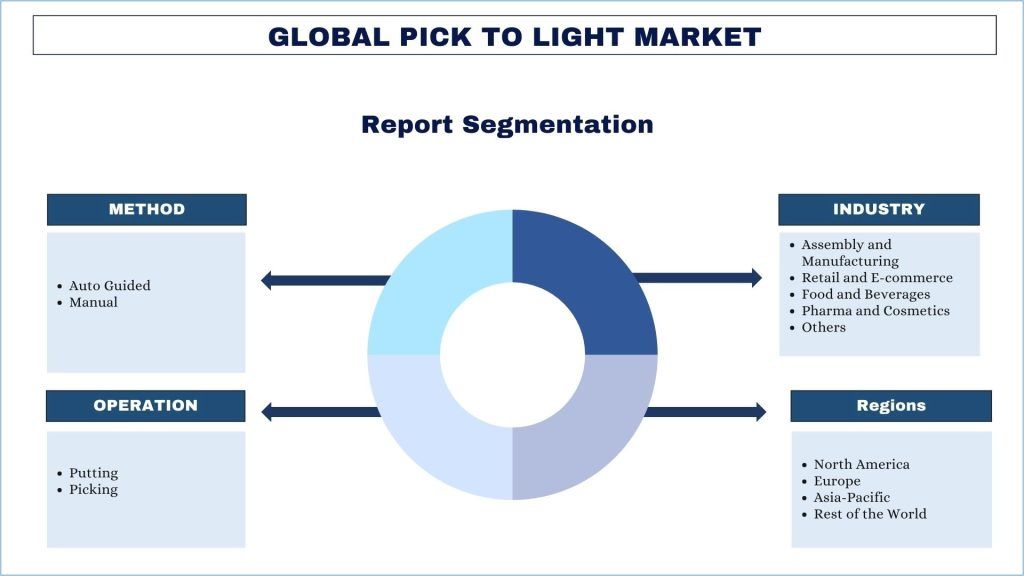
Tendencias de Pick to Light
Esta sección analiza las principales tendencias del mercado que están influyendo en los diversos segmentos de Pick to Light, según lo identificado por nuestro equipo de expertos en investigación.
Políticas gubernamentales que respaldan la industria de Pick to Light
Las políticas gubernamentales que respaldan la industria de Pick to Light (PTL) generalmente giran en torno a iniciativas más amplias destinadas a promover la automatización, mejorar la eficiencia de la cadena de suministro y respaldar la innovación tecnológica en los sectores de logística y almacenamiento. Estas son algunas políticas e iniciativas gubernamentales clave que pueden tener un impacto positivo en el mercado de PTL:
Iniciativas de Industria 4.0 y Fabricación Inteligente: Muchos gobiernos están promoviendo la adopción de tecnologías de la Industria 4.0, que incluyen la automatización y las soluciones de almacenamiento inteligente como los sistemas PTL. Estas iniciativas a menudo vienen con incentivos financieros, subvenciones y beneficios fiscales para las empresas que invierten en tecnologías avanzadas de fabricación y logística.
Incentivos para la Transformación Digital: Las políticas que fomentan la transformación digital en las industrias, como los subsidios para la adopción de tecnología, pueden impulsar la implementación de sistemas PTL. Estos incentivos ayudan a las empresas a compensar los costos iniciales asociados con la actualización de su infraestructura de almacenamiento.
Apoyo a las Pequeñas y Medianas Empresas (PYMEs): Los gobiernos a menudo tienen programas específicos para apoyar a las PYMEs en la adopción de nuevas tecnologías. Estos programas pueden proporcionar asistencia financiera, capacitación y recursos para ayudar a las empresas más pequeñas a implementar sistemas PTL y mejorar su eficiencia operativa.
Planes de Desarrollo de Infraestructura: Las inversiones en el desarrollo de infraestructura, incluida la creación de centros logísticos inteligentes y almacenes modernos, respaldan la adopción de sistemas PTL. Los gobiernos también pueden invertir en parques logísticos y zonas económicas especiales que faciliten el uso de tecnologías avanzadas de almacenamiento.
Regulaciones Ambientales y Objetivos de Sostenibilidad: Las políticas destinadas a reducir la huella de carbono y promover la sostenibilidad pueden impulsar la adopción de sistemas PTL. Estos sistemas mejoran la eficiencia y reducen el desperdicio, lo que se alinea con las regulaciones ambientales y los objetivos de sostenibilidad.
Programas de Desarrollo de la Fuerza Laboral: Los gobiernos pueden ofrecer programas de capacitación para mejorar las habilidades de la fuerza laboral en el manejo de tecnologías avanzadas de logística, incluidos los sistemas PTL. Esto garantiza que las empresas tengan acceso a mano de obra calificada capaz de operar y mantener estos sistemas.
Políticas Comerciales y de Exportación: Las políticas que apoyan las actividades comerciales y de exportación pueden impulsar indirectamente el mercado de PTL. El almacenamiento y el cumplimiento de pedidos eficientes son fundamentales para mantener ventajas competitivas en el comercio internacional, lo que anima a las empresas a invertir en sistemas PTL.
Incentivos Fiscales y Beneficios de Depreciación: Las políticas fiscales que brindan beneficios de depreciación acelerada para las inversiones en automatización y tecnología pueden hacer que sea financieramente atractivo para las empresas adoptar sistemas PTL.
Estas políticas e iniciativas gubernamentales integrales crean colectivamente un ecosistema de apoyo para el crecimiento y la adopción de sistemas Pick to Light, lo que permite a las empresas mejorar su eficiencia operativa y su competitividad en el mercado global.
Se espera que APAC crezca con una CAGR significativa durante el período de pronóstico
El mercado de Pick To Light en la región de Asia-Pacífico (APAC) está experimentando un crecimiento sólido, impulsado por varios factores clave. El principal impulsor del mercado de Pick To Light en la región de Asia-Pacífico (APAC) es el rápido crecimiento del comercio electrónico y la creciente demanda de soluciones eficientes de cumplimiento de pedidos. A medida que los países de la región APAC experimentan un aumento en las compras en línea, las empresas se enfrentan al desafío de satisfacer las expectativas de los clientes de entregas rápidas y precisas. Los sistemas Pick To Light ofrecen una solución al mejorar la eficiencia de los procesos de picking de pedidos, reducir los errores y, en última instancia, mejorar la experiencia general del cliente. Además, el creciente enfoque en la automatización de almacenes y la adopción de tecnologías avanzadas en la región APAC están impulsando la demanda de sistemas Pick To Light a medida que las empresas buscan mejorar su eficiencia operativa y seguir siendo competitivas en el mercado.
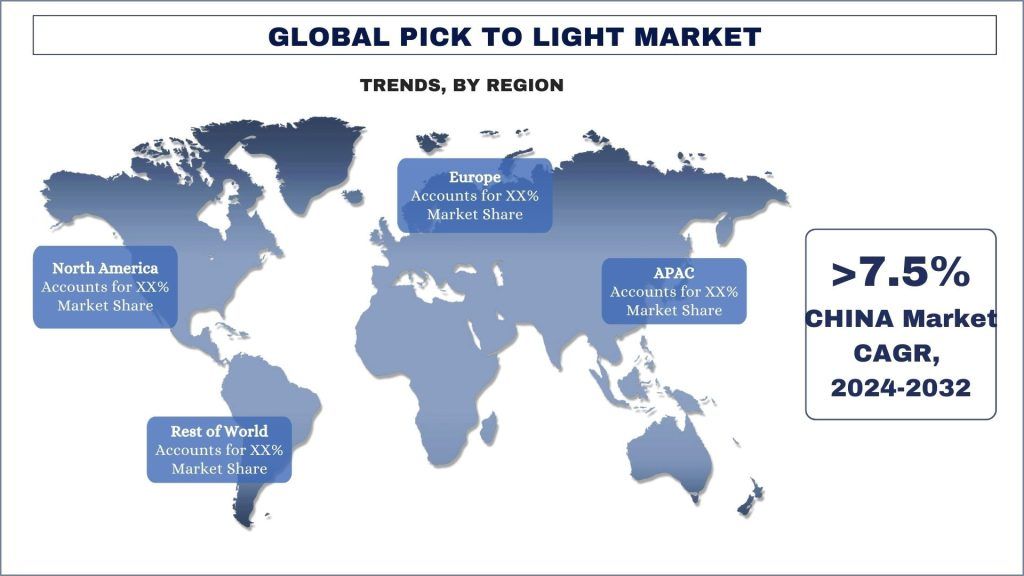
Descripción general de la industria de Pick to Light
El mercado de Pick to Light es competitivo y está fragmentado, con la presencia de varios actores del mercado globales e internacionales. Los actores clave están adoptando diferentes estrategias de crecimiento para mejorar su presencia en el mercado, como asociaciones, acuerdos, colaboraciones, lanzamientos de nuevos productos, expansiones geográficas y fusiones y adquisiciones. Algunos de los principales actores que operan en el mercado son Honeywell International Inc., Murata Machinery Ltd., Schaefer Systems International Pvt Ltd, Dematic, Daifuku Co., Ltd., Vanderlande Industries B.V., Bastian Solutions LLC, AIOI-System, Lightning Pick Technologies e IHI Corporation.
Noticias de Pick to Light
Abril de 2024: Honeywell presenta un nuevo sistema PTL habilitado para IoT: en 2024, Honeywell lanzó su último sistema Pick to Light habilitado para IoT, diseñado para mejorar la eficiencia y la precisión del almacén. Este nuevo sistema se integra perfectamente con los sistemas de gestión de almacenes existentes, proporcionando análisis de datos en tiempo real y mejorando significativamente la velocidad y la precisión del picking de pedidos.
Marzo de 2023: Kardex Remstar amplía las soluciones PTL para el cumplimiento del comercio electrónico: En 2023, Kardex Remstar anunció la expansión de sus soluciones PTL diseñadas específicamente para el sector del comercio electrónico. Las nuevas soluciones incluyen características avanzadas, como el picking dirigido por voz y las interfaces de usuario mejoradas, destinadas a aumentar la productividad y la precisión en entornos de cumplimiento de pedidos de alto volumen.
Cobertura del informe Pick to Light
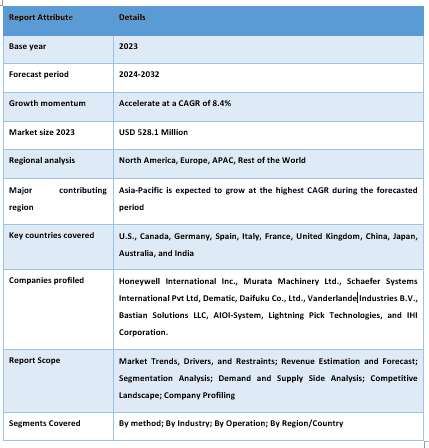
Razones para comprar este informe:
- El estudio incluye el análisis de tamaño y pronóstico del mercado validado por expertos clave autenticados de la industria.
- El informe presenta una revisión rápida del rendimiento general de la industria de un vistazo.
- El informe cubre un análisis en profundidad de los pares prominentes de la industria con un enfoque principal en las finanzas comerciales clave, las carteras de productos, las estrategias de expansión y los desarrollos recientes.
- Examen detallado de los impulsores, las restricciones, las tendencias clave y las oportunidades que prevalecen en la industria.
- El estudio cubre de manera integral el mercado en diferentes segmentos.
- Análisis profundo a nivel regional de la industria.
Opciones de personalización:
El mercado global de Pick to Light se puede personalizar aún más según los requisitos o cualquier otro segmento de mercado. Además de esto, UMI entiende que puede tener sus propias necesidades comerciales, así que no dude en contactarnos para obtener un informe que se adapte completamente a sus requisitos.
Tabla de contenido
Metodología de Investigación para el Análisis del Mercado Pick to Light (2024-2032)
El análisis del mercado histórico, la estimación del mercado actual y la previsión del mercado futuro de Pick to Light a nivel mundial fueron los tres pasos principales emprendidos para crear y explorar la adopción de Pick to Light en las principales regiones a nivel mundial. Se llevó a cabo una exhaustiva investigación secundaria para recopilar las cifras históricas del mercado y estimar el tamaño actual del mercado. En segundo lugar, se tomaron en consideración numerosos hallazgos y supuestos para validar estas ideas. Además, también se realizaron exhaustivas entrevistas primarias con expertos de la industria en toda la cadena de valor del Pick to Light global. Tras la suposición y validación de las cifras del mercado a través de entrevistas primarias, empleamos un enfoque de arriba hacia abajo/de abajo hacia arriba para pronosticar el tamaño completo del mercado. Posteriormente, se adoptaron métodos de desglose del mercado y triangulación de datos para estimar y analizar el tamaño del mercado de los segmentos y subsegmentos de la industria. La metodología detallada se explica a continuación:
Análisis del Tamaño del Mercado Histórico
Paso 1: Estudio Profundo de Fuentes Secundarias:
Se llevó a cabo un estudio secundario detallado para obtener el tamaño histórico del mercado de Pick to Light a través de fuentes internas de la empresa, como informes anuales y estados financieros, presentaciones de rendimiento, comunicados de prensa, etc., y fuentes externas que incluyen revistas, noticias y artículos, publicaciones gubernamentales, publicaciones de la competencia, informes del sector, bases de datos de terceros y otras publicaciones creíbles.
Paso 2: Segmentación del Mercado:
Después de obtener el tamaño histórico del mercado de Pick to Light, realizamos un análisis secundario detallado para recopilar información histórica del mercado y compartirla para diferentes segmentos y subsegmentos para las principales regiones. Los principales segmentos incluidos en el informe son Método, Industria y Operación. Además, se realizaron análisis a nivel de país para evaluar la adopción general de modelos de prueba en esa región.
Paso 3: Análisis de Factores:
Después de adquirir el tamaño histórico del mercado de diferentes segmentos y subsegmentos, realizamos un análisis de factores detallado para estimar el tamaño actual del mercado de Pick to Light. Además, realizamos un análisis de factores utilizando variables dependientes e independientes como Método, Industria y Operación del Pick to Light. Se realizó un análisis exhaustivo de los escenarios de demanda y oferta considerando las principales asociaciones, fusiones y adquisiciones, expansión comercial y lanzamientos de productos en el sector Pick to Light en todo el mundo.
Estimación y Previsión del Tamaño Actual del Mercado
Tamaño Actual del Mercado: Basándonos en la información práctica de los 3 pasos anteriores, llegamos al tamaño actual del mercado, los actores clave en el Pick to Light global y las cuotas de mercado de los segmentos. Todas las divisiones de cuotas porcentuales requeridas y los desgloses del mercado se determinaron utilizando el enfoque secundario mencionado anteriormente y se verificaron a través de entrevistas primarias.
Estimación y Previsión: Para la estimación y previsión del mercado, se asignaron ponderaciones a diferentes factores, incluidos los impulsores y las tendencias, las restricciones y las oportunidades disponibles para las partes interesadas. Después de analizar estos factores, se aplicaron técnicas de previsión relevantes, es decir, el enfoque de arriba hacia abajo/de abajo hacia arriba, para llegar a la previsión del mercado para 2032 para diferentes segmentos y subsegmentos en los principales mercados a nivel mundial. La metodología de investigación adoptada para estimar el tamaño del mercado abarca:
- El tamaño del mercado de la industria, en términos de ingresos (USD) y la tasa de adopción del Pick to Light en los principales mercados a nivel nacional
- Todas las cuotas porcentuales, divisiones y desgloses de los segmentos y subsegmentos del mercado
- Actores clave en el Pick to Light global en términos de productos ofrecidos. Además, las estrategias de crecimiento adoptadas por estos actores para competir en el mercado de rápido crecimiento
Validación del Tamaño y la Cuota del Mercado
Investigación Primaria: Se realizaron entrevistas en profundidad con los Líderes de Opinión Clave (KOL) que incluyen a los Ejecutivos de Nivel Superior (CXO/VP, Jefe de Ventas, Jefe de Marketing, Jefe de Operaciones, Jefe Regional, Jefe de País, etc.) en las principales regiones. Los hallazgos de la investigación primaria se resumieron y se realizó un análisis estadístico para probar la hipótesis establecida. Los aportes de la investigación primaria se consolidaron con los hallazgos secundarios, convirtiendo así la información en conocimientos prácticos.
División de los Participantes Primarios en Diferentes Regiones
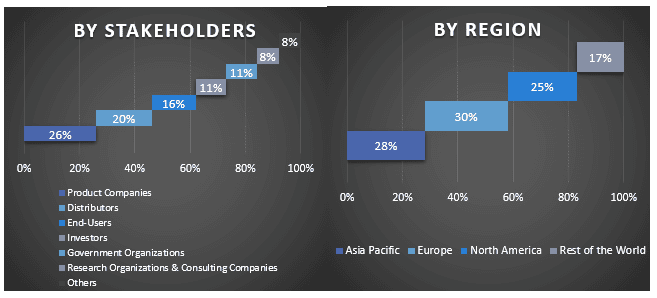
Ingeniería del Mercado
Se empleó la técnica de triangulación de datos para completar la estimación general del mercado y para llegar a números estadísticos precisos para cada segmento y subsegmento del Mercado Pick to Light global. Los datos se dividieron en varios segmentos y subsegmentos después de estudiar varios parámetros y tendencias en las áreas de Método, Industria y Operación en el Mercado Pick to Light global.
El objetivo principal del Estudio Pick to Light Global
Las tendencias actuales y futuras del mercado del Pick to Light global se identificaron en el estudio. Los inversores pueden obtener información estratégica para basar su discreción para las inversiones en el análisis cualitativo y cuantitativo realizado en el estudio. Las tendencias actuales y futuras del mercado determinaron el atractivo general del mercado a nivel regional, proporcionando una plataforma para que el participante industrial explote el mercado sin explotar para beneficiarse de una ventaja de ser el primero en actuar. Otros objetivos cuantitativos de los estudios incluyen:
- Analizar el tamaño actual y previsto del mercado de Pick to Light en términos de valor (USD). Además, analizar el tamaño actual y previsto del mercado de diferentes segmentos y subsegmentos
- Los segmentos en el estudio incluyen áreas de Método, Industria y Operación
- Definir y analizar el marco regulatorio para la industria Pick to Light
- Analizar la cadena de valor involucrada con la presencia de varios intermediarios, junto con el análisis de los comportamientos de los clientes y competidores de la industria
- Analizar el tamaño actual y previsto del mercado de Pick to Light para la región principal
- Los principales países de las regiones estudiadas en el informe incluyen Asia Pacífico, Europa, América del Norte y el resto del mundo
- Perfiles de empresas de Pick to Light y las estrategias de crecimiento adoptadas por los actores del mercado para mantenerse en el mercado de rápido crecimiento
- Análisis profundo a nivel regional de la industria
Preguntas frecuentes Preguntas frecuentes
P1: ¿Cuál es el tamaño actual del mercado y el potencial de crecimiento del mercado Pick to Light?
P2: ¿Cuáles son los factores impulsores del crecimiento del mercado Pick to Light?
P3: ¿Qué segmento tiene la mayor cuota en el mercado de Pick to Light por industria?
P4: ¿Cuáles son las tecnologías emergentes y las tendencias en el mercado de Pick to Light?
P5: ¿Qué región dominará el mercado de Pick to Light?
Relacionados Informes
Los clientes que compraron este artículo también compraron








